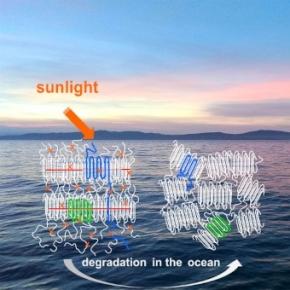The IMRCP laboratory participates in the monitoring of microplastics in the ocean

How does plastic packaging waste degrade in the ocean?
This is the question addressed in recent work on the degradation of polyethylene during prolonged exposure to a marine environment. This semicrystalline polymer, widely used as plastic packaging, has its nanostructure profoundly modified, with an increase in crystallinity accompanied by a disturbance of the lamellar order. This modification of the nanostructure has important implications for understanding the embrittlement, chemical degradation and then the breaking of a plastic waste into smaller and smaller fragments, that ultimately determine the lifespan of a plastic packaging in the environment.
In collaboration with researchers from the Laboratoire de Physique des Solides and the Lund Institute for Advanced Neutron and X-ray Science (Sweden), Alexandra ter Halle (SMODD team) and Anne-Françoise Mingotaud (IDeAS team), researchers at the IMRCP laboratory, participated in this study which addresses the issue of the lifespan of polyethylene (PE) waste in the environment, showing that its nanostructure evolves over time.
By analyzing PE plastic waste collected in the Atlantic Ocean, the authors drew some very simple but important conclusions about the processes determining the reintegration of PE into the natural carbon cycle.
Molecular scale understanding of the embrittlement in polyethylene ocean debris
Garvey C.; Impéror-Clerc M.; Rouzière S.; Gouadec G.; Boyron O.; Rowenczyk L.; Mingotaud A-F.; ter Halle A.
Environ. Sci. Technol., 2020, 54, 11173–11181, DOI


